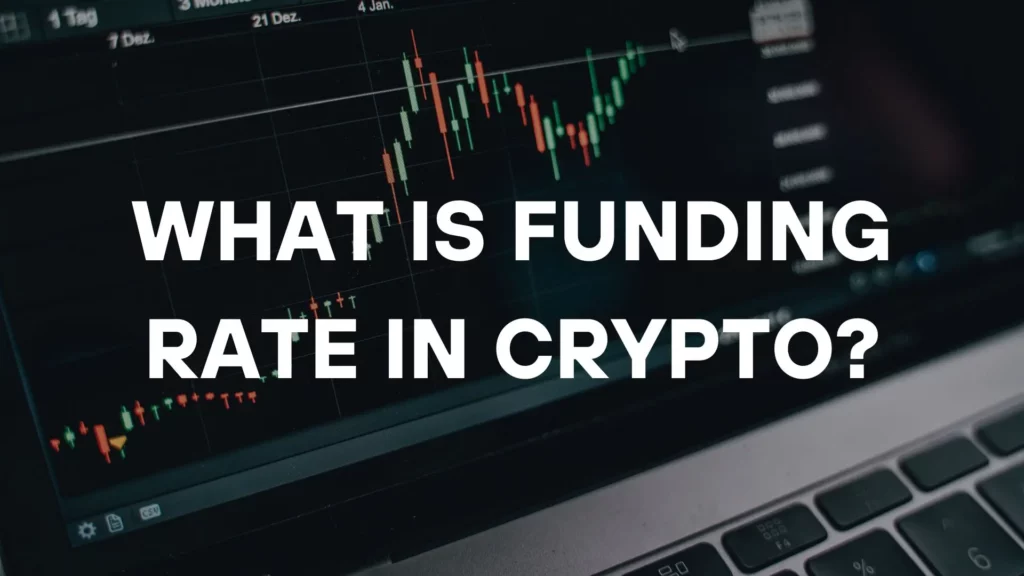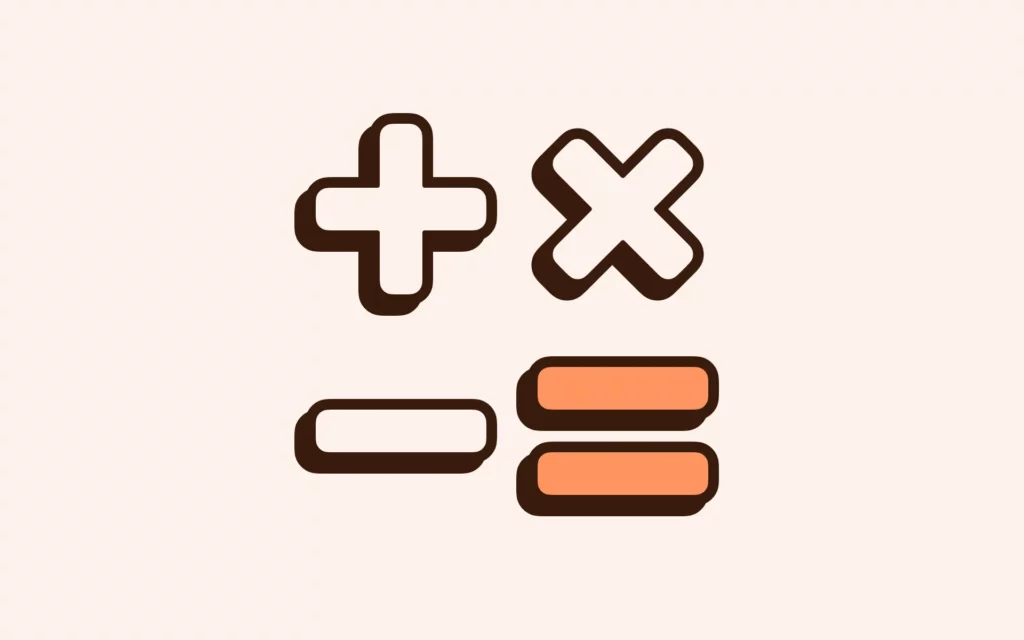What Are Crypto Futures Funding Rates !?
Written by Stephen Wedge
Stephen Wedge, with over 15 years of experience in finance, holds a Master of Science in Finance from Vanderbilt University's Owen Graduate School of Management. He specializes in financial analysis, strategic investment planning, and has a keen interest in the world of cryptocurrencies. With a deep understanding of both traditional and digital financial markets, Stephen offers valuable expertise to investors seeking to navigate the complexities of crypto investments.
Expert Reviewed
This article has been reviewed by crypto market experts at SCM to ensure all the content, sources, and claims adhere to the highest standards of accuracy and reliability.
Last Updated on June 20, 2025
In cryptocurrency trading, futures funding rates are key, especially with perpetual contracts.
These rates are periodic payments between traders, based on the difference between perpetual contract prices and spot prices.
Positive rates mean long positions pay short, indicating a bullish market, while negative rates mean short positions pay long, signaling bearish sentiment.
Funding rates help keep futures prices aligned with spot prices over time and are exchanged between traders, not taken by exchanges.
When the futures market is overvalued compared to the spot market, the funding rate increases, encouraging short positions to balance prices.
Funding rates vary across exchanges and change with market conditions. Platforms like Binance, OKX, and Bybit offer tools to monitor real-time rates, helping you make informed decisions in crypto futures markets
What Is Funding Rate in Crypto?

Funding rates are essential elements in the crypto futures markets that ensure the price of perpetual contracts is tethered closely to the underlying spot price.
Explanation of Funding Rates
Funding rates represent the periodic payments from buyers or sellers holding perpetual futures contracts.
These payments are exchanged between traders based on their relative positions—long or short.
The primary purpose of funding rates is to encourage the price of the perpetual futures to converge with the spot price, creating a balance that reflects the underlying market’s value.
How Funding Rates Are Calculated?
The calculation of funding rates involves the interest rate and the premium or discount of the futures contract relative to the spot price.
Interest rates are typically derived from the borrow-lending costs in the underlying market, while the premium involves the comparative price of futures and spot markets.
The formula often sees adjustments depending on the specific exchange but generally includes these two components:
- Interest Rate Component: A fixed rate that reflects the cost of capital.
- Premium/Discount Component: Determined by the difference between the perpetual contract price and the spot price.
The Role of Funding Rates in Crypto Futures Markets
Funding rates serve a dual function in crypto futures markets: they maintain the alignment of futures contract prices with the underlying asset’s spot price and influence traders’ positions.
In scenarios where the perpetual contract trades at a premium to the spot, long position holders pay the funding rate to those holding short positions.
This mechanism discourages excessive bullish sentiment that can steer prices away from the spot value.
Conversely, when a contract trades below the spot, the funding rate becomes negative, incentivizing long positions to help elevate the futures prices to the spot level.
Types of Fees in Crypto Futures
In the dynamic realm of crypto futures trading, you’ll encounter various fees that impact your trading strategy and potential profits. These costs can come from the execution of trades, the periodic settlement of contracts, and holding positions overnight.
Trading Fees

- Maker fees: Paid when you add liquidity to the market by placing a limit order under the last trade price for buys or above the previous trade price for sells.
- Taker occurs when you take liquidity away from the market by fulfilling an existing order.
Crypto exchanges usually charge different rates for makers and takers, with maker fees often being lower.
Settlement Fees
- Delivery fees: Applied when a futures contract reaches its expiration date and the underlying assets are delivered.
Settlement fees vary from one exchange to another and are usually a small percentage of the contract’s value.
Overnight Funding Fees
- Perpetual contracts funding: This fee is exchanged between buyers and sellers every eight hours to ensure the futures price aligns with the underlying spot price.
| Interval | Fee Exchange Time |
|---|---|
| Every 8 hours | Funding Fee Payment |
The rate is determined by market conditions and the cost of leverage, which can fluctuate significantly.
How Funding Rates Affect Traders
Funding rates are critical in aligning contract prices with the underlying spot prices in crypto futures, directly impacting your trading profitability and strategy.
Impact on Long and Short Positions
When you hold a long position and funding rates are positive, you will pay funding fees to those holding short positions. Conversely, you receive payments if you are short when funding rates are favorable.
These fees can accumulate and significantly impact your trading outcome, especially if you hold positions open for extended periods.
Strategies to Mitigate Funding Rate Risks
To mitigate risks associated with funding rates:
- Monitor the rates actively to avoid unexpected fees.
- Use hedging strategies, such as opening offsetting positions, to neutralize potential losses.
- Consider timing entry and exit points to reduce exposure to high funding rate intervals.
Negative Funding Rates in Crypto & Its Effects
A negative funding rate indicates that shorts pay longs. This scenario typically suggests that the market expects the price to decrease.
For you, as a trader, negative rates allow you to earn funding fees when holding long positions but also reflect potential downtrends in the market, which can affect your position’s value.
Examples of Recent Market Conditions
Funding rates tend to be high during bullish market conditions, indicating strong buyer confidence. However, this can lead to significant costs for long traders.
In contrast, in a bearish market, funding rates may be low or negative; this can benefit you by holding long positions as you receive fees, but it may also signal declining prices.
Analyzing these market conditions is crucial for informing your trading decisions.
Comparison of Funding Rates Across Exchanges

Funding rates vary by exchange and are essential to your trading costs when dealing with perpetual contracts. These rates are periodically set to align the contract prices with the underlying asset’s market price.
Binance Funding Rate
- Current Funding Rate: The funding rate on Binance often reflects the liquidity and volatility of the market. As a significant exchange, their rates are competitive.
- Historical Data: As of 30 days, Binance has displayed an average funding rate of -0.007%, indicative of past market conditions.
BitMEX Funding Rate
- Current Funding Rate: Bitmex funding rates are designed to mirror market sentiment and can fluctuate more frequently due to the exchange’s trading volume and contract offerings.
- Historical Data: Bitmex has shown variability in its rates, offering insights into potential trading strategies.
Bybit Funding Rate
- Current Funding Rate: Bybit sets funding rates that can adjust based on market leverage and the positioning of traders within the perpetual contracts market.
- Historical Data: Bybit rates are higher than those of other major platforms, maintaining competitiveness.
Other Notable Exchanges
- OKX
- Bitget
- Dydx
- Bitfinex
- Gateio
These exchanges also set funding rates for perpetual contracts. You may find disparities that can be exploited for arbitrage opportunities or to minimize fees based on historical data and live rate charts available to you.
Real-Time Funding Rates and Predictions
Real-time funding rates are critical for traders to understand the cost of holding futures contracts while predicting future fee adjustments.
- Tools for Monitoring Funding Rate
You, you can utilize online platforms like CoinGlass and Binance Fut to track real-time funding rates effectively.
These tools display current funding trends from time to the next funding event and historical data for analysis. Charts and graphs are standard visual aids that allow you to quickly assess the funding rate trends.
- How to Interpret Real-Time Data
When examining real-time funding rates, it’s crucial to understand the rate itself and the time until the next update.
The funding rate is a fee paid by one side of the perpetual contract to the other, and it can align the futures price with the spot price of the underlying asset. Look for rates above your threshold to evaluate the cost of holding a position.
- Predictive Models for Funding Rates
Predictive models generally analyze historical data to forecast future funding rates. They consider the first value the current rate and the second value the predicted rate for a future interval.
Remember, predictions are subject to change driven by market dynamics. Use these models to strategize your future positions.
Funding Rate Arbitrage
Funding rate arbitrage exploits the price differentials between futures contracts and the spot price of cryptocurrencies. As a trader, understanding this strategy could unlock potential profits in the market.
- Definition and Explanation of Arbitrage
Arbitrage in the financial context is when you simultaneously buy and sell an asset or security in different markets to profit from the price difference.
Funding rate arbitrage specifically involves perpetual futures contracts in the cryptocurrency market. These contracts have a funding rate that ensures the futures price stays close to the spot price.
The funding rate becomes an arbitrage opportunity when the perpetual contract’s price deviates from the spot price.
- Opportunities in Funding Rate Arbitrage
You may find opportunities in funding rate arbitrage when there is a discrepancy between the funding rates across different exchanges. For example:
- Binance Funding Rate: 0.01%
- BitMEX Funding Rate: 0.03%
In this case, you might buy perpetual contracts on Binance and sell on BitMEX, earning the difference. Also, by going “delta neutral,” whopensning equal but opposing positions, you can potentially lock in the funding rate differential as profit without exposure to market movements.
- Risks and Considerations
While the strategy offers profit potential, it is not without risks. Common risks include:
- Market Volatility: Sharp price movements can impact funding rates and erase profit margins.
- Liquidity Constraints: You need sufficient liquidity to enter and exit positions without significantly affecting the market price.
- Operational Risks: These include exchange downtime and transaction delays that could impact your trades.
Awareness of these risks and continuously monitoring the markets can help you navigate the complexities of funding rate arbitrage.
Frequently Asked Questions
This section addresses the common inquiries surrounding funding rates and fees and provides crucial details for understanding these aspects in future crypto trading.
What is the crypto futures funding rate?
The funding rate in crypto futures is a regular payment exchanged between traders holding long and short positions in perpetual futures contracts. It ensures future prices are closely tied to the spot market.
What is the funding fee in crypto trading?
A funding fee in crypto trading is the amount exchanged between traders based on the funding rate. It is not a fee paid to the exchange but to other market participants.
How are crypto futures funding rates calculated?
Calculating crypto futures funding rates involves several factors, including the interest rates and the difference between the perpetual contract price and the spot price, often called premium or discount.
What does a negative funding rate indicate in the context of crypto futures?
A negative funding rate implies that the futures price is below the spot price, often causing traders with short positions to pay those with long positions, thereby incentivizing the taking of long positions in a bearish market.
What is a positive crypto funding rate?
A positive funding rate indicates that the price of the perpetual futures contract is higher than the spot price. This situation typically results in traders with long positions paying those with short positions.
Is there a distinction between long and short positions regarding funding fees?
Yes, there is a distinction. If the funding rate is positive, long positions pay short positions; if it is negative, short positions pay longs. This mechanism aims to balance the market sentiment.
What factors influence the fluctuation of funding rates in cryptocurrency futures?
Funding rates in cryptocurrency futures fluctuate due to changes in market leverage, overall market sentiment, and the differential between futures and spot market prices.
How often are funding rates for future crypto contracts updated?
Funding rates for crypto futures contracts are typically updated at regular intervals, commonly every 8 hours, to reflect the ongoing relationship between the futures contract and the spot market price.
Conclusion
Understanding funding rates in crypto futures markets is crucial for trading success. These rates help align futures prices with spot prices, stabilizing the market.
Depending on your position—long or short—you may pay or receive funding fees.
For long positions, you pay the funding fee when the rate is favorable. For short positions, you receive the fee. These rates impact your profits, making it essential to monitor them closely.
Volatility in the crypto market can significantly affect funding rates, influencing your earnings. High rates often indicate bullish sentiment, while low or negative rates suggest a bearish outlook.
Since funding rates vary across exchanges and are not static, reviewing historical rates can guide your future strategies.
Key takeaways include understanding that funding rates are vital for market balance, they fluctuate and directly impact your trading outcomes, and being proactive in adapting to these changes can improve your strategy.
A solid grasp of funding rates will enhance your confidence and effectiveness in navigating the crypto futures market.

